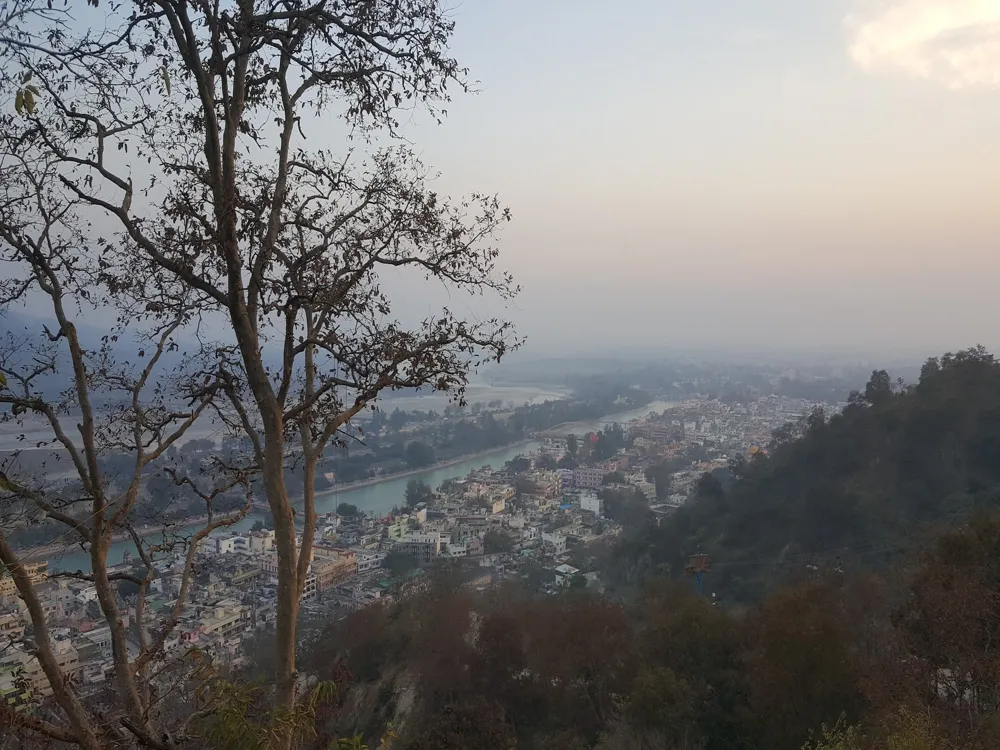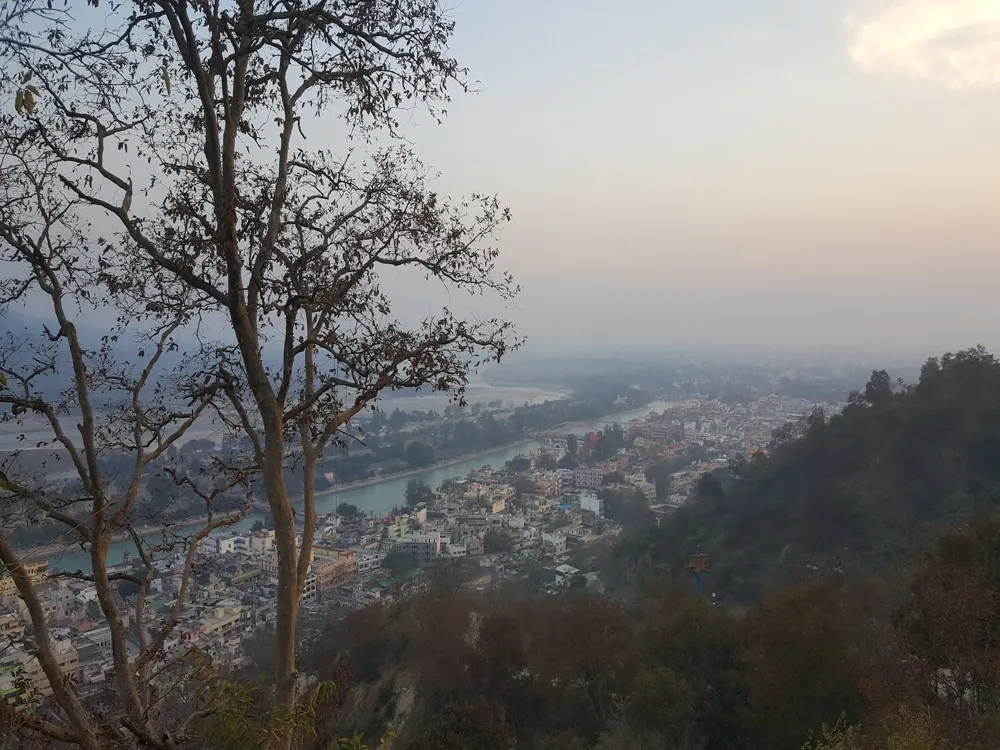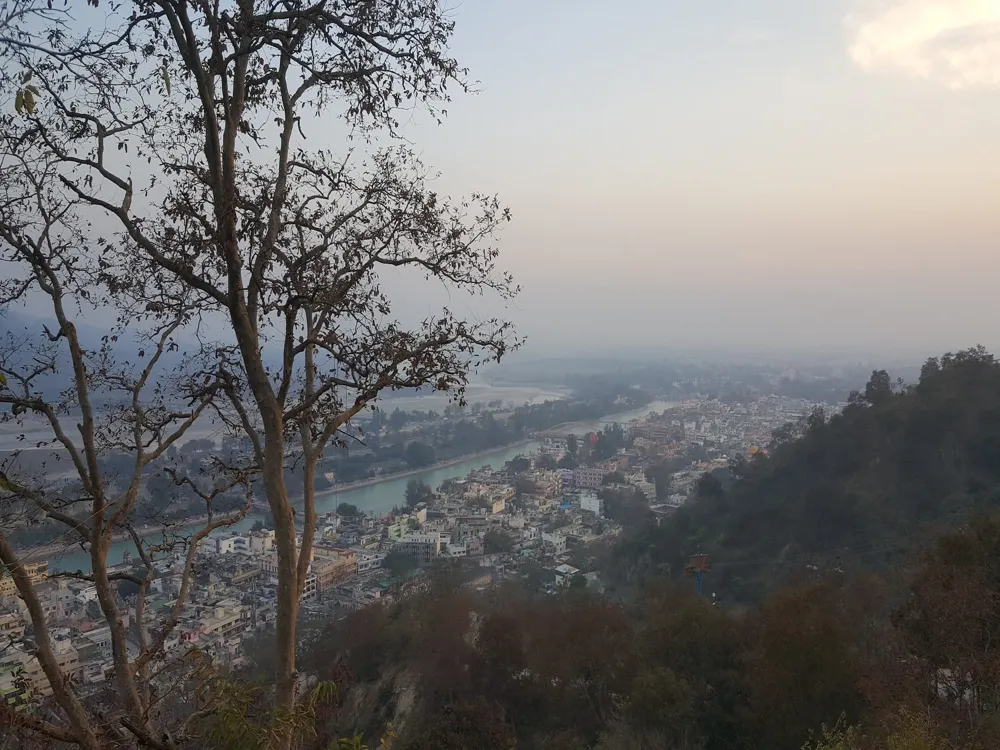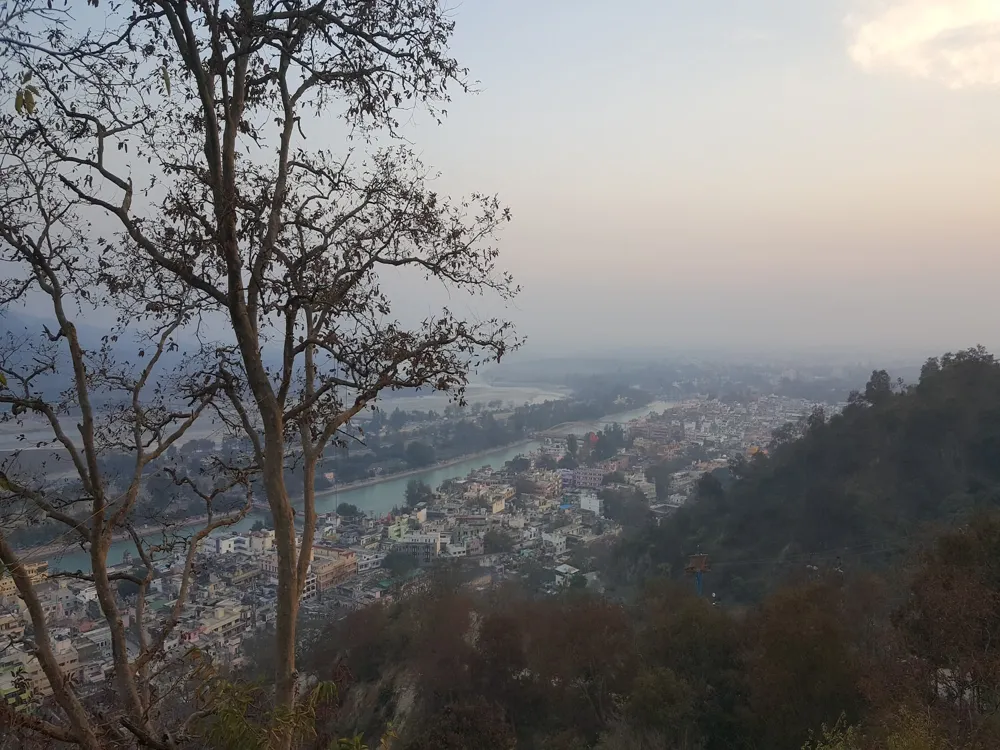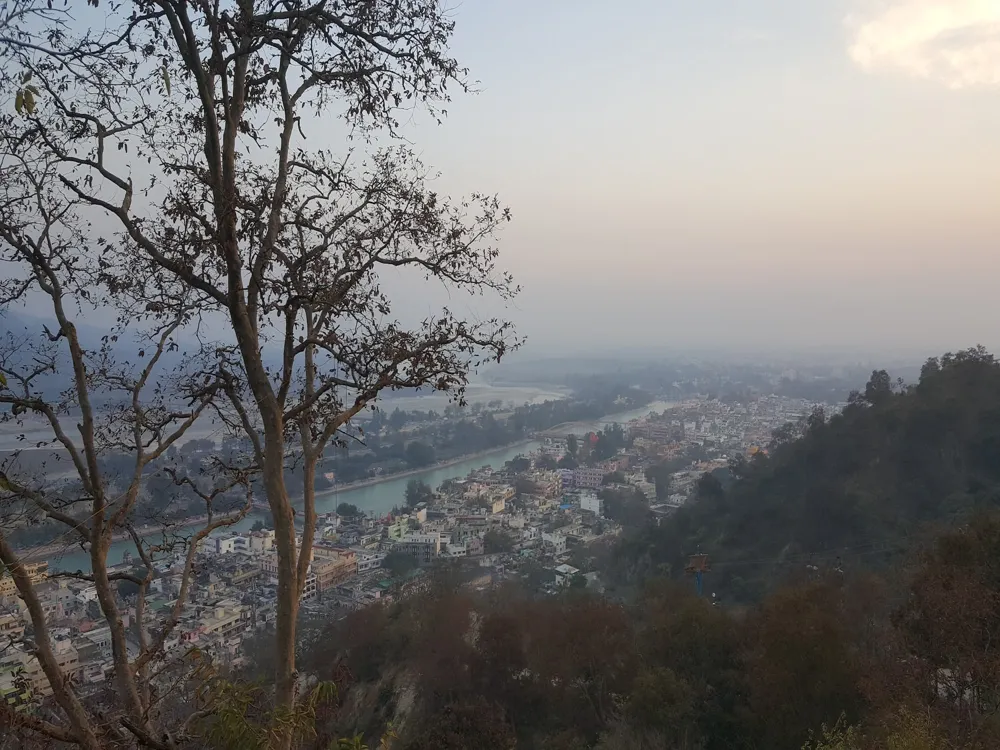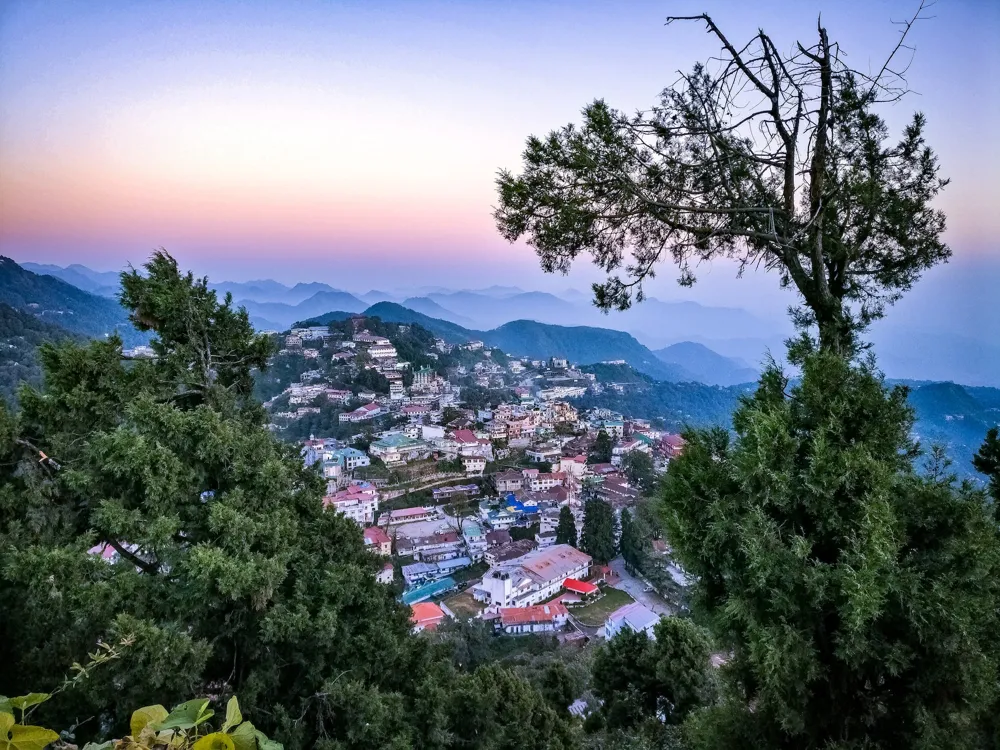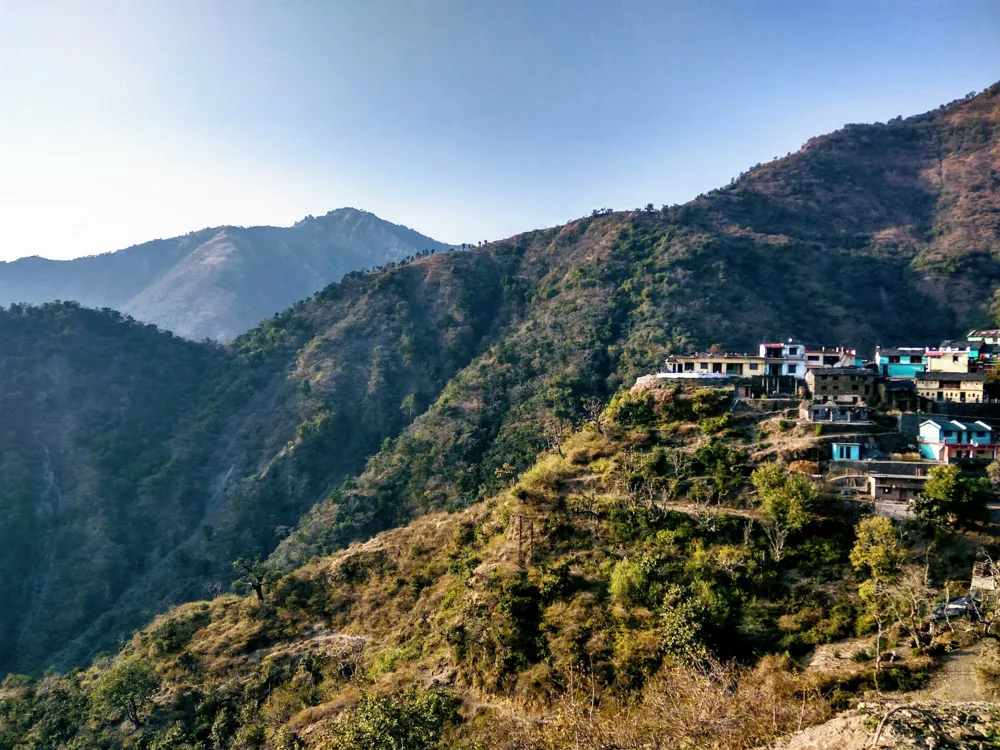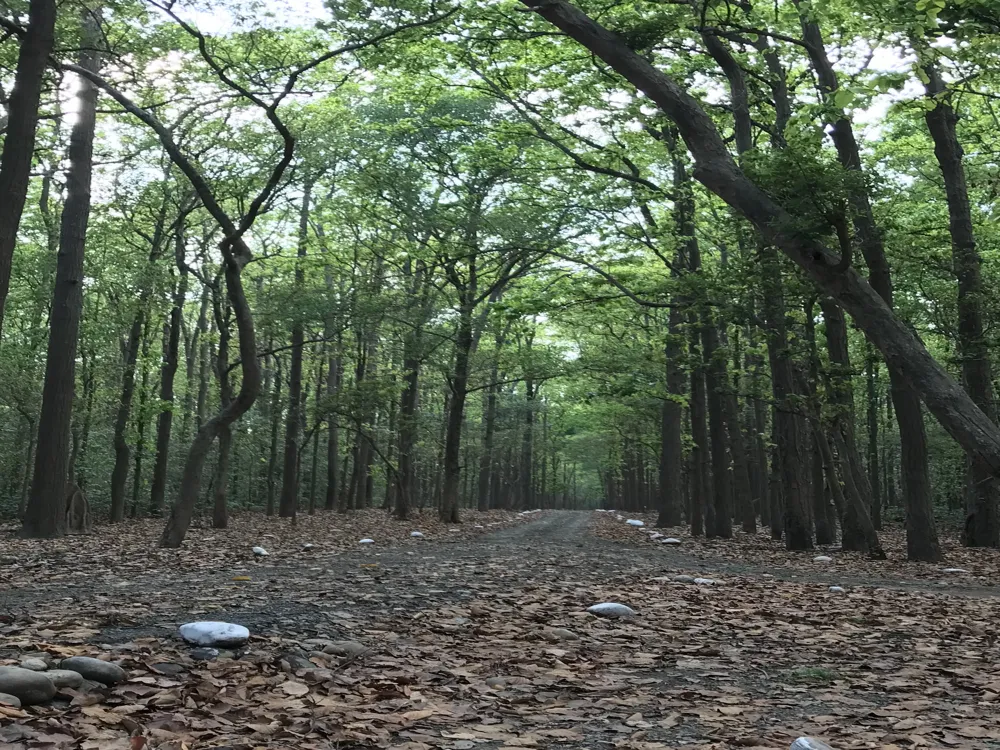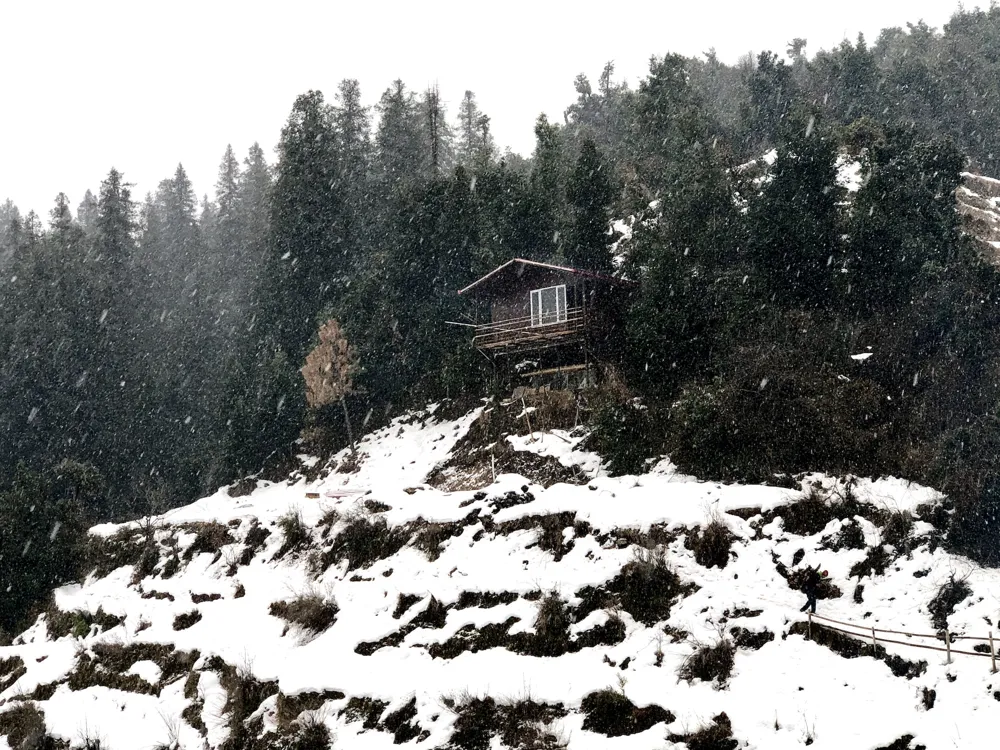Haridwar, an ancient city located in the state of Uttarakhand, India, is known for its deep spiritual significance, rich cultural heritage, and breathtaking natural beauty. Situated at the foothills of the Himalayas, where the River Ganges emerges from the mountains to enter the plains, Haridwar serves as a gateway to several prominent Hindu pilgrimage sites. This sacred city, whose name translates to 'Gateway to God,' is one of the seven holiest places in Hinduism.
The history of Haridwar dates back to ancient times, mentioned in several Hindu scriptures and mythologies. It is believed to be the spot where a drop of Amrit, the elixir of immortality, fell during the celestial churning of the ocean. This event is commemorated through the world-renowned Kumbh Mela, held here every twelve years, attracting millions of devotees and tourists from around the globe.
Haridwar's landscape is adorned with a series of ghats (steps) leading to the holy River Ganges, where pilgrims perform ritual baths, believing it cleanses their sins and aids in achieving salvation. The city's evening Ganga Aarti, a spiritual ritual where lamps are offered to the Goddess Ganga, is a mesmerizing spectacle, creating an ambiance filled with devotion and serenity.
The city is not only a spiritual center but also a hub for learning Ayurveda, yoga, and Vedic philosophy. Its vibrant streets are lined with temples, ashrams, and markets, offering an array of religious artifacts, spices, and handicrafts. Haridwar's cuisine is predominantly vegetarian, reflecting the town's sacred nature, with a variety of local dishes and street foods that tantalize the taste buds of visitors.
Haridwar's rich biodiversity, evident in its surrounding forests and the Rajaji National Park nearby, adds to its allure, making it a destination that harmoniously blends spiritual, cultural, and natural elements. This city, with its timeless appeal, continues to enchant visitors, offering them an experience that transcends the ordinary and touches the divine.
The architecture of Haridwar is a splendid fusion of ancient and modern styles, reflecting the city's enduring legacy and evolving cultural dynamics. The city's architectural landscape is dominated by its numerous temples, each narrating a tale of religious significance and artistic grandeur. These temples, ranging from ancient structures to more recent ones, exhibit a variety of architectural styles, from classic Nagara to contemporary designs, showcasing the evolution of Hindu temple architecture.
One of the most iconic structures in Haridwar is the Mansa Devi Temple, perched atop the Bilwa Parvat. The temple, an embodiment of the Nagara style of architecture, features a multi-tiered spire, intricately carved pillars, and ornate gateways, making it a magnificent example of traditional Hindu temple design. The temple complex, accessible via a scenic cable car ride, offers panoramic views of the city and the Ganges, adding to its allure.
Another architectural marvel is the Chandi Devi Temple, located on the Neel Parvat. This temple, associated with Goddess Chandi, exhibits a blend of old and new architectural elements. The original sanctum, believed to be established by Adi Shankaracharya, contrasts with the more recent additions, providing insights into the architectural transitions over centuries.
The Har Ki Pauri ghat, the city's spiritual heart, is an architectural wonder in itself. Famous for its large stepped banks, the ghat's design facilitates mass bathing for pilgrims, a sight to behold during major festivals. The evening Ganga Aarti at Har Ki Pauri, with its synchronized lighting and ritualistic performances, transforms the ghat into an ethereal setting, highlighting its architectural and spiritual significance.
Haridwar's ashrams, such as the Shanti Kunj and the Patanjali Yogpeeth, blend spiritual and modern architectural elements, offering serene environments conducive to meditation and yoga. These structures, with their spacious courtyards, large halls, and tranquil gardens, reflect a contemporary approach to designing spiritual spaces.
The city's bazaars and old residential areas present a different architectural aspect, with narrow lanes, overhanging balconies, and intricately carved wooden doors, reminiscent of the bygone era. This blend of the ancient and the modern, the spiritual and the everyday, makes Haridwar's architectural landscape a fascinating subject for exploration and admiration.
The ideal time to visit Haridwar is from October to April, when the weather is pleasant, and the city's spiritual and cultural activities are at their peak. The Chardham Yatra season, from April to November, is also a good time for pilgrims. However, visitors should avoid the monsoon months of July to September due to heavy rains and potential flooding.
Haridwar is a sacred city, and it's important to respect local customs and traditions. Dress modestly, especially when visiting temples and ghats. Non-vegetarian food and alcohol are prohibited in many parts of the city, and it's advisable to adhere to these restrictions.
The ghats and temples are Haridwar's main attractions. Ensure to visit Har Ki Pauri during the Ganga Aarti for a truly spiritual experience. Early morning is the best time to visit the temples to avoid crowds and experience the serene atmosphere.
While Haridwar is generally safe, it's important to be cautious, especially in crowded areas. Keep your belongings secure and beware of pickpockets. During festivals, follow crowd management rules and avoid the busiest times to ensure safety.
Indulge in the local vegetarian cuisine, which includes a variety of North Indian dishes and street foods. The markets in Haridwar offer a range of religious artifacts, handicrafts, and ayurvedic products, making them a must-visit for souvenirs.
Haridwar is well-connected by air, rail, and road, making it easily accessible from various parts of India. The nearest airport is the Jolly Grant Airport in Dehradun, about 35 kilometers from Haridwar. Regular flights connect Dehradun to major cities like Delhi, Mumbai, and Kolkata. From the airport, taxis and buses are available to reach Haridwar.
The Haridwar Railway Station is a major junction, with numerous trains connecting it to cities like Delhi, Mumbai, Kolkata, and Chennai. Trains offer a convenient and affordable way to reach Haridwar, with options ranging from luxury to budget-friendly.
For those preferring to travel by road, Haridwar is well-served by a network of national highways and state roads. Regular bus services, including luxury and state-run buses, connect Haridwar with major cities like Delhi, Dehradun, and Rishikesh. Self-driving to Haridwar is also a popular option, offering the flexibility to explore the region at one's own pace.
Overview of Haridwar, Uttarakhand
Architecture of Haridwar
Tips When Visiting Haridwar
Best Time to Visit
Respecting Local Customs
Exploring the Ghats and Temples
Staying Safe
Local Cuisine and Shopping
How To Reach Haridwar
Chandi Devi Temple
Haridwar
Uttarakhand
NaN onwards
View haridwar Packages
Weather :
Tags : Temple
Timings : 7:00 AM - 7:00 PM
Time Required : 1-2 hrs
Planning a Trip? Ask Your Question
Haridwar Travel Packages
View All Packages For Haridwar
Top Hotel Collections for Haridwar

Private Pool

Luxury Hotels

5-Star Hotels

Pet Friendly
Top Hotels Near Haridwar
Other Top Ranking Places In Haridwar
View All Places To Visit In haridwar
View haridwar Packages
Weather :
Tags : Temple
Timings : 7:00 AM - 7:00 PM
Time Required : 1-2 hrs
Planning a Trip? Ask Your Question
Haridwar Travel Packages
View All Packages For Haridwar
Top Hotel Collections for Haridwar

Private Pool

Luxury Hotels

5-Star Hotels

Pet Friendly







